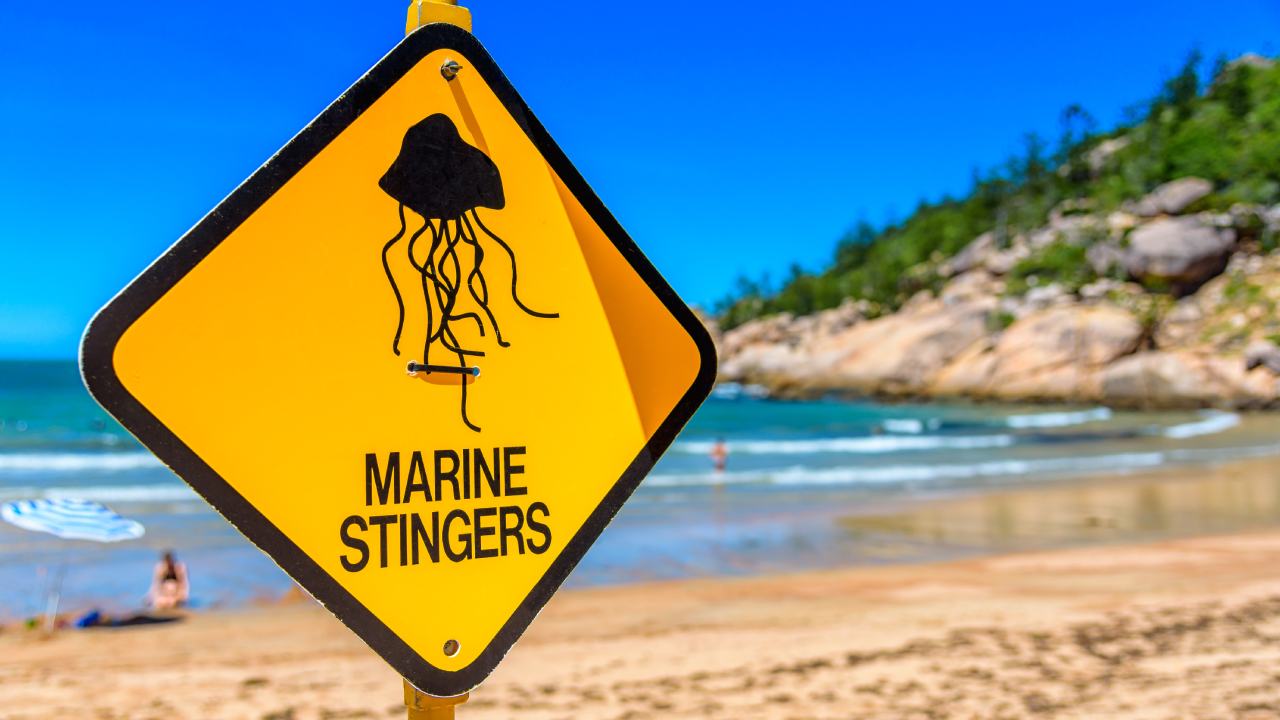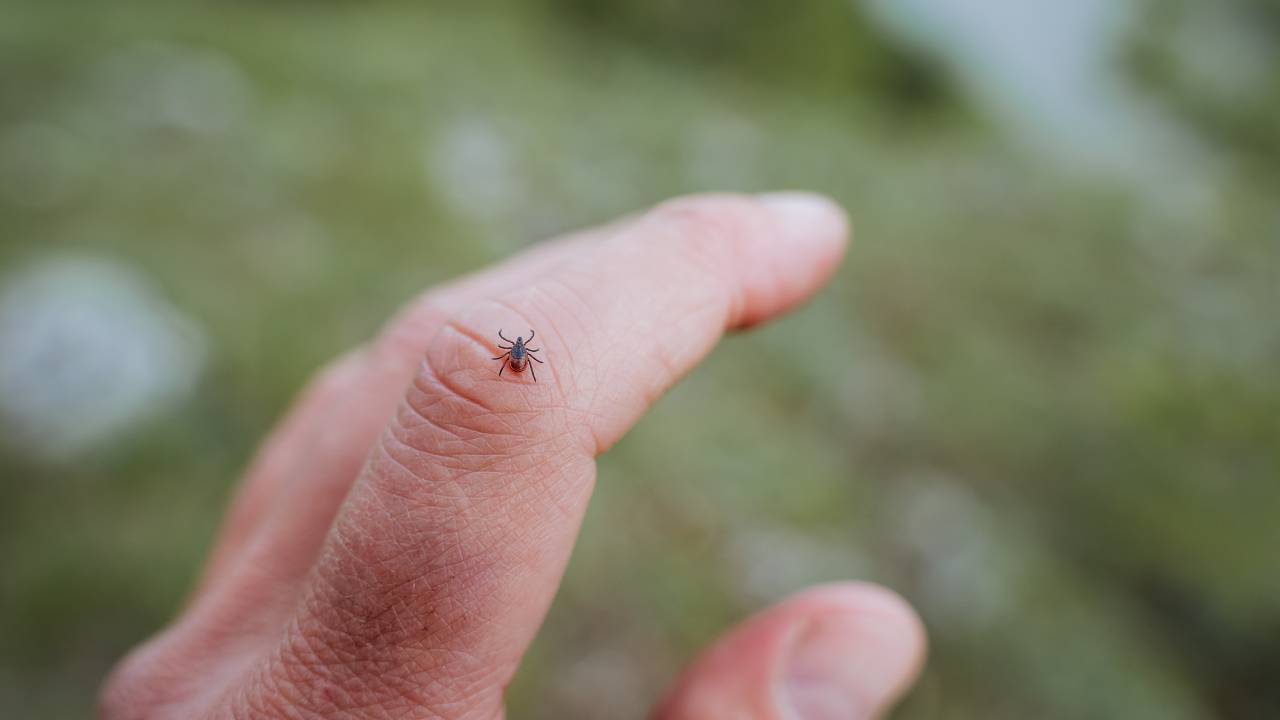The Vital Facts
- Australia is home to numerous venomous species of jellyfish, including the box jellyfish and Irukandji Jellyfish
- Jellyfish stings have resulted in 10 fatalities in Australia since 2000
- Although they aren’t technically jellyfish, there are roughly 10,000 bluebottle stings each year in Australia
If you require immediate first aid treatment for jellyfish stings, click here.
Jellyfish are mysterious and mesmerising creatures.
While they may appear delicate, they can pose a significant threat to swimmers when encountered in certain conditions and areas. Other than sunburn, heatstroke and drowning, jellyfish stings are some of the most common first aid emergencies during beach trips.
If you or your family love swimming in the summer, this guide for jellyfish stings first aid can help keep you and your family safe for your next trip.
Navigate guide:
- What are jellyfish stings?
- When are you at risk of jellyfish stings?
- How severe are jellyfish stings?
- How can you avoid jellyfish stings?
- What are the symptoms of a jellyfish sting?
- First aid for jellyfish stings
What are Jellyfish Stings?
Jellyfish stings are injuries that occur when the tentacles of jellyfish come in contact with a person’s skin and the jellyfish stinging cells (also called nematocysts) shoot venom into the skin. As jellyfish stings can be painful and the severity depends on several factors, knowing the first aid for jellyfish stings is extremely important.
When Are You at Risk of Jellyfish Stings?
The risk of jellyfish stings varies depending on the time of year and location.
In Australia, especially in Tropical North Queensland, jellyfish stings are more common during the warmer months, typically from November to May, when the warmer water attracts various species of jellyfish to coastal areas.
How Severe are Jellyfish Stings?
The severity of the sting can vary based on the jellyfish species, the size of the jellyfish and the sensitivity of the person stung.
Box jellyfish are highly venomous and immediately cause severe pain and red whip-like lines. In worse cases, it can cause the heart to stop. Bluebottle jellyfish, on the other hand, are more common (with 10,000 cases of recorded stings each year) and can cause intense pain that usually stops within the next hour.
How Can You Avoid Jellyfish Stings?
While most jellyfish stings are not deadly, they can be extremely painful and cause discomfort, so it helps to follow these tips:
Keep an eye out for signs of jellyfish washed up on the shore or on the water’s surface
- Use protective suits and footwear when swimming or wading in shallow water
- Get information about jellyfish in the area from locals
- Avoid the water during jellyfish season
What are the Symptoms of a Jellyfish Sting?
Symptoms of jellyfish stings include the following:
- Sharp, burning, or stinging pain
- Redness and swelling in the affected area
- Itching and rashes
- Welts and tracks or whip-like marks left by tentacles
- Throbbing pain that radiates up a leg or an arm
Severe jellyfish stings, on the other hand, can lead to:
- Stomach pain, nausea and vomiting
- Breathing difficulties
- Headaches
- Muscle pain and spasms
- Faintness and dizziness
- Unconsciousness
- Death
If you notice these symptoms after you, your family or your friend is stung by a jellyfish, it’s important to administer first aid as soon as you can.
First Aid for Jellyfish Stings
- No one nationwide recommendation for first-aid can be made because of differences between jellyfish species around Australia.
- In most cases, first-aid providers are unlikely to be able to identify the jellyfish.
- In the tropics, because of the risk (even if small) that the victim has been stung by a potentially lethal jellyfish, the priority must be to preserve life. If the species causing the sting cannot clearly be identified as harmless, or due to a “Bluebottle”, it is safer to treat the victim with vinegar.
- Outside the tropics, where huge numbers of non-life-threatening stings occur, the primary objective is pain relief with heat or cold.
Prompt and appropriate first aid can significantly reduce the pain and complications of a jellyfish sting. Here are the steps to follow:
Non-tropical
- Keep the victim at rest, reassure and keep under constant observation.
- Do not allow rubbing of the sting area.
- Pick off any tentacles (this is not dangerous to the rescuer) and rinse the sting area well with seawater to remove invisible nematocysts.
- Place the victim’s stung area in hot water (no hotter than the rescuer can comfortably tolerate) for 20 minutes.
- If local pain is unrelieved by heat, or if hot water is not available, apply a cold pack or ice in a dry plastic bag.
- If pain persists or is generalised, if the sting area is large (half of a limb or more), or involves sensitive areas (e.g the eye) call an ambulance (Dial Triple Zero – 000) and seek assistance from a lifesaver/lifeguard if available.
For advice concerning any marine envenomation contact Australian Venom Research Unit 1300 760 451 or Australian Poisons Information Centre on 13 11 26.
Tropical Australia
- Remove the victim from the water and restrain if necessary.
- If a victim has more than a localised single sting, or who looks/feels unwell, call an Ambulance (Dial Triple Zero – 000) and seek assistance from a lifesaver/lifeguard if available.
- Assess victim and commence resuscitation as necessary
- Liberally douse/spray the stung area with vinegar for 30 seconds to neutralise invisible stinging cells, then pick off remaining tentacles.
- If the victim has clearly been stung by a “Bluebottle” and is assessed as having a localised sting, is stable and not requiring ambulance, vinegar should not be applied and victim managed as per stings in non-tropical Australia.
- If vinegar is unavailable, pick off any tentacles (this is not harmful to the rescuer) and rinse the sting well with seawater.
- Apply a cold pack or ice in a dry plastic bag for analgesia. Do not allow or apply fresh water directly onto the sting because it may cause discharge of undischarged nematocysts.
- Antivenom is available for Chironex fleckeri and other multi-tentacled box jellyfish stings. In tropical coastal areas, hospitals keep and ambulances carry antivenom.
- Patients who initially appear stable but experience severe symptoms in the following 30 minutes may be suffering Irukandji syndrome and need urgent medical care.
Encountering a jellyfish sting can be a scary experience. However, knowing how to respond with first aid for jellyfish stings can make a significant difference in minimising pain and potential complications.
The Next Step: Complete a First Aid Course!
If you want to ensure the safety of you and your family during beach trips, you must have the knowledge and skills to confidently administer first aid for jellyfish stings and respond to a medical emergency until professional medical assistance is available.
At Vital First Aid, our qualified first aid trainers are highly skilled and experienced, and all first aid students will receive a First Aid Certificate on completion.
After completing a course, you’ll immediately feel more comfortable and confident, not just with jellyfish stings, but with all aspects of first aid.
To benefit from our range of first aid courses, sign up here.




